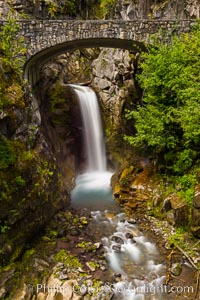
Lunar Eclipse and blood red moon sequence over Arch Rock, planet Mars above the moon, composite image, Joshua Tree National Park, April 14/15 2014.
Image ID: 29201
Panorama dimensions: 5835 x 14655
Image ID: 29201
Panorama dimensions: 5835 x 14655

Delicate Arch at Sunset, Arches National Park.
Location: Delicate Arch, Arches National Park, Utah
Image ID: 29283
Location: Delicate Arch, Arches National Park, Utah
Image ID: 29283

Milky Way over John Moulton Barn, Grand Teton National Park.
Image ID: 32305
Panorama dimensions: 4329 x 10697
Image ID: 32305
Panorama dimensions: 4329 x 10697

Teton Range from Schwabacher Landing, Grand Teton National Park.
Image ID: 32310
Panorama dimensions: 6294 x 13569
Image ID: 32310
Panorama dimensions: 6294 x 13569

Fall Colors in the Virgin River Narrows, Zion National Park, Utah.
Location: Virgin River Narrows, Zion National Park, Utah
Image ID: 32634
Panorama dimensions: 5145 x 14424
Location: Virgin River Narrows, Zion National Park, Utah
Image ID: 32634
Panorama dimensions: 5145 x 14424

Lower Falls of the Yellowstone River. At 308 feet, the Lower Falls of the Yellowstone River is the tallest fall in the park. This view is from the famous and popular Artist Point on the south side of the Grand Canyon of the Yellowstone.
Location: Grand Canyon of the Yellowstone, Yellowstone National Park, Wyoming
Image ID: 07769
Location: Grand Canyon of the Yellowstone, Yellowstone National Park, Wyoming
Image ID: 07769

Lower Falls of the Yellowstone River. At 308 feet, the Lower Falls of the Yellowstone River is the tallest fall in the park. This view is from the famous and popular Artist Point on the south side of the Grand Canyon of the Yellowstone.
Location: Grand Canyon of the Yellowstone, Yellowstone National Park, Wyoming
Image ID: 07770
Location: Grand Canyon of the Yellowstone, Yellowstone National Park, Wyoming
Image ID: 07770
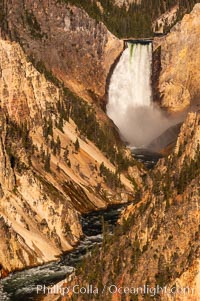
Lower Falls of the Yellowstone River. At 308 feet, the Lower Falls of the Yellowstone River is the tallest fall in the park. This view is from the famous and popular Artist Point on the south side of the Grand Canyon of the Yellowstone.
Location: Grand Canyon of the Yellowstone, Yellowstone National Park, Wyoming
Image ID: 07771
Location: Grand Canyon of the Yellowstone, Yellowstone National Park, Wyoming
Image ID: 07771
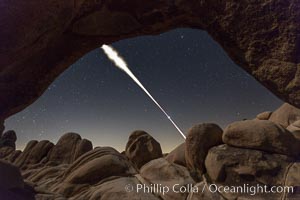
Lunar Eclipse Sequence, the path of the moon through the sky as it progresses from being fully visible (top) to fully eclipsed (middle) to almost fully visible again (bottom), viewed through Arch Rock, April 4 2015.
Location: Joshua Tree National Park, California
Image ID: 30713
Location: Joshua Tree National Park, California
Image ID: 30713

El Capitan eastern face, sunrise.
Location: El Capitan, Yosemite National Park, California
Image ID: 22745
Location: El Capitan, Yosemite National Park, California
Image ID: 22745

Fletcher Peak (11407') rises above Fletcher Lake (10174'), near Vogelsang High Sierra Camp in Yosemite's high country.
Location: Yosemite National Park, California
Image ID: 23208
Location: Yosemite National Park, California
Image ID: 23208

Steller sea lions (Northern sea lions) gather on rocks. Steller sea lions are the largest members of the Otariid (eared seal) family. Males can weigh up to 2400 lb., females up to 770 lb.
Species: Steller sea lion, Eumetopias jubatus
Location: Chiswell Islands, Kenai Fjords National Park, Alaska
Image ID: 16977
Species: Steller sea lion, Eumetopias jubatus
Location: Chiswell Islands, Kenai Fjords National Park, Alaska
Image ID: 16977

Mesa Arch spans 90 feet and stands at the edge of a mesa precipice thousands of feet above the Colorado River gorge. For a few moments at sunrise the underside of the arch glows dramatically red and orange.
Location: Island in the Sky, Canyonlands National Park, Utah
Image ID: 18040
Location: Island in the Sky, Canyonlands National Park, Utah
Image ID: 18040

Rainbow and clearing storm clouds, sunrise light on Manly Beacon, Zabriskie Point, Death Valley National Park, California.
Location: Zabriskie Point, Death Valley National Park, California
Image ID: 27660
Location: Zabriskie Point, Death Valley National Park, California
Image ID: 27660

Milky Way over the Watchman, Zion National Park. The Milky Way galaxy rises in the night sky above the the Watchman.
Location: Zion National Park, Utah
Image ID: 28587
Location: Zion National Park, Utah
Image ID: 28587
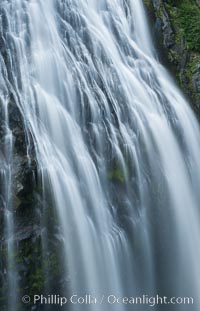
Narada Falls cascades down a cliff, with the flow blurred by a time exposure. Narada Falls is a 188 foot (57m) waterfall in Mount Rainier National Park.
Location: Narada Falls, Mount Rainier National Park, Washington
Image ID: 28718
Location: Narada Falls, Mount Rainier National Park, Washington
Image ID: 28718

The Second Wave at Sunset, Vermillion Cliffs. The Second Wave, a curiously-shaped sandstone swirl, takes on rich warm tones and dramatic shadowed textures at sunset. Set in the North Coyote Buttes of Arizona and Utah, the Second Wave is characterized by striations revealing layers of sedimentary deposits, a visible historical record depicting eons of submarine geology.
Location: North Coyote Buttes, Paria Canyon-Vermilion Cliffs Wilderness, Arizona
Image ID: 28619
Location: North Coyote Buttes, Paria Canyon-Vermilion Cliffs Wilderness, Arizona
Image ID: 28619

Half Dome and sunset clouds, evening.
Location: Half Dome, Yosemite National Park, California
Image ID: 28693
Location: Half Dome, Yosemite National Park, California
Image ID: 28693

El Capitan reflected in Merced River, Yosemite National Park. Seriously, take a close look, the image as presented here is upside down!.
Location: El Capitan, Yosemite National Park, California
Image ID: 36458
Location: El Capitan, Yosemite National Park, California
Image ID: 36458

The Milky Way galaxy arches over Arch Rock on a clear evening in Joshua Tree National Park.
Location: Joshua Tree National Park, California
Image ID: 26792
Location: Joshua Tree National Park, California
Image ID: 26792

Archangel Falls in autumn, near the Subway in North Creek Canyon, with maples and cottonwoods turning fall colors.
Location: Zion National Park, Utah
Image ID: 26097
Location: Zion National Park, Utah
Image ID: 26097
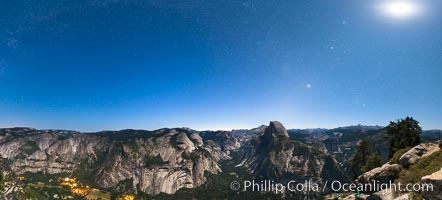
Half Dome and nighttime stars, viewed from Glacier Point.
Location: Glacier Point, Yosemite National Park, California
Image ID: 27951
Panorama dimensions: 4761 x 10519
Location: Glacier Point, Yosemite National Park, California
Image ID: 27951
Panorama dimensions: 4761 x 10519

Yosemite Falls reflected in Flooded Sentinel Meadow, when the Merced River floods Yosemite Valley following a winter of historic snowfall in the Sierra Nevada, Yosemite National Park.
Location: Yosemite National Park, California
Image ID: 39378
Location: Yosemite National Park, California
Image ID: 39378

Milky Way and Stars over Broken Arch, Arches National Park, Utah.
Location: Broken Arch, Arches National Park, Utah
Image ID: 29238
Location: Broken Arch, Arches National Park, Utah
Image ID: 29238

Vogelsang Peak (11516') at sunset, reflected in a small creek near Vogelsang High Sierra Camp in Yosemite's high country.
Location: Yosemite National Park, California
Image ID: 23202
Location: Yosemite National Park, California
Image ID: 23202
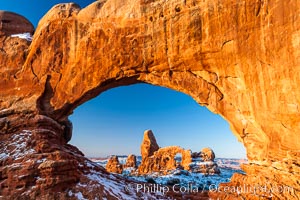
Turret Arch through North Window, winter, sunrise.
Location: North Window, Arches National Park, Utah
Image ID: 18120
Location: North Window, Arches National Park, Utah
Image ID: 18120

Self portrait at sunrise, panorama of Crater Lake. Crater Lake is the six-mile wide lake inside the collapsed caldera of volcanic Mount Mazama. Crater Lake is the deepest lake in the United States and the seventh-deepest in the world. Its maximum recorded depth is 1996 feet (608m). It lies at an altitude of 6178 feet (1880m).
Location: Crater Lake National Park, Oregon
Image ID: 19130
Panorama dimensions: 2726 x 9677
Location: Crater Lake National Park, Oregon
Image ID: 19130
Panorama dimensions: 2726 x 9677

Racetrack sailing stone and star trails. A sliding rock of the Racetrack Playa. The sliding rocks, or sailing stones, move across the mud flats of the Racetrack Playa, leaving trails behind in the mud. The explanation for their movement is not known with certainty, but many believe wind pushes the rocks over wet and perhaps icy mud in winter.
Location: Racetrack Playa, Death Valley National Park, California
Image ID: 27671
Location: Racetrack Playa, Death Valley National Park, California
Image ID: 27671

Sailing stone on the Racetrack Playa. The sliding rocks, or sailing stones, move across the mud flats of the Racetrack Playa, leaving trails behind in the mud. The explanation for their movement is not known with certainty, but many believe wind pushes the rocks over wet and perhaps icy mud in winter.
Location: Racetrack Playa, Death Valley National Park, California
Image ID: 27689
Location: Racetrack Playa, Death Valley National Park, California
Image ID: 27689
